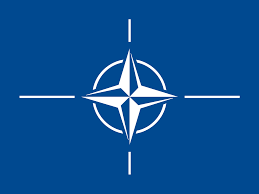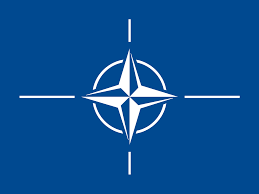The proliferation of inexpensive, highly capable Unmanned Aerial Systems (UAS) has fundamentally altered the character of modern warfare. Recent conflicts, particularly in Ukraine and the Caucasus, have demonstrated that the tactical and even strategic balance can be tipped by the effective use of drones for reconnaissance, targeting, and direct attack. The most pressing evolution of this threat is the emergence of coordinated UAS swarms, designed to overwhelm traditional, stationary air defense systems through sheer numbers. In response, defense planners and industry leaders are rapidly developing a new paradigm: mobile, multi-layered, and integrated counter-UAS (C-UAS) architectures capable of protecting maneuver forces on a dynamic battlefield.
This shift represents a critical adaptation to a threat that invalidates long-held assumptions about air superiority and force protection. A single, high-value air defense asset, such as a Patriot or S-400 battery, is ill-suited and economically unsustainable for countering dozens of low-cost, attritable drones. The modern battlespace demands a C-UAS capability that is as mobile and distributed as the forces it is tasked to protect, leading to a surge in innovation focused on vehicle-mounted, networked defensive systems.
The Evolving Threat Landscape
The journey from single, high-altitude UAS platforms to low-tier swarms has been remarkably swift. For years, the primary drone threat was perceived as coming from large, sophisticated systems like the Predator or Global Hawk, which were the domain of major military powers. However, the commercialization of drone technology and its weaponization by both state and non-state actors created a new class of threat. These systems, often modified commercial quadcopters or purpose-built loitering munitions, are cheap, difficult to detect, and can be deployed in large numbers.
The concept of a swarm moves beyond individual attacks. It involves multiple UAS operating in a coordinated manner, sharing information and dynamically allocating tasks to saturate defenses. This approach exploits the Achilles’ heel of many legacy air defense systems: a limited number of engagement channels. A system designed to track and engage a handful of fighter jets or cruise missiles can be quickly overwhelmed by a swarm of 20 or 30 small drones attacking from multiple vectors simultaneously. The conflict in Ukraine has served as a crucible for these tactics, with both sides leveraging drone swarms to devastating effect against armor, artillery, and logistics nodes, forcing a doctrinal rethink on force protection.
The Strategic Imperative for a Mobile, Layered Defense
The core challenge posed by drone swarms is one of economics and mobility. Firing a missile worth hundreds of thousands, or even millions, of dollars to intercept a drone that costs a few thousand is a losing proposition. This unfavorable cost-exchange ratio necessitates the development of more affordable and sustainable countermeasures. Furthermore, static, fixed-site C-UAS solutions are of limited use to armored brigades or infantry units on the move. The defensive umbrella must travel with the force.
This has given rise to the concept of a layered, mobile architecture. Such a system integrates multiple sensor and effector types onto tactical vehicles like the Stryker, JLTV, or Boxer. The ‘layered’ approach ensures that there is no single point of failure. An outer layer might use electronic warfare (EW) to jam drone command links or GPS navigation. A mid-tier layer could employ high-energy lasers (HEL) or high-power microwave (HPM) systems for low-cost, per-shot engagements. The final, inner layer would consist of kinetic effectors, such as small interceptor missiles or cannon systems firing advanced munitions like programmable airburst rounds, to destroy any threats that penetrate the outer defenses. This integration provides a robust, resilient, and economically viable defense against a complex threat profile.
Key Components and Industry Innovators
The effectiveness of a mobile C-UAS architecture hinges on its command-and-control (C2) system. Advanced C2 platforms, increasingly powered by artificial intelligence and machine learning (AI/ML), are required to perform the ‘detect, track, identify, and defeat’ sequence at machine speed. These systems must fuse data from a disparate set of sensors—including compact radars, electro-optical/infrared (EO/IR) cameras, and radio frequency (RF) detectors—to build a coherent air picture. The AI algorithms then classify threats, predict their intent, and recommend the optimal effector for engagement, drastically reducing the cognitive load on the operator and shortening the engagement timeline, which is critical when facing a fast-approaching swarm.
Major defense contractors and specialized technology firms are at the forefront of this innovation. Companies like Raytheon are developing systems such as the Coyote interceptor and PHASER high-power microwave weapon. BAE Systems is advancing specialized munitions, while Northrop Grumman is focusing on integrated C2 and directed energy solutions. Alongside these established players, a host of agile startups are pioneering novel sensor and AI technologies, creating a vibrant and competitive ecosystem dedicated to solving the C-UAS challenge.
Future Trajectories and Challenges
The technological arms race between UAS and C-UAS is set to accelerate. Future drone swarms will likely feature higher levels of autonomy, operating without reliance on GPS or continuous human control, making them resistant to traditional jamming techniques. They may also employ cooperative tactics, with some drones designated for reconnaissance, others for EW, and the rest for kinetic strikes.
The corresponding C-UAS systems will need to become more autonomous and networked. The vision is a ‘system of systems’ where multiple mobile C-UAS platforms share data in real-time, coordinating their defensive actions across a wide area without direct human intervention for every engagement. Integrating these mobile C-UAS bubbles into the broader Integrated Air and Missile Defense (IAMD) framework remains a significant technical and doctrinal challenge. Ensuring interoperability between different systems and allies will be paramount for collective defense. As this technology matures, its proliferation to adversaries will also pose a continuous threat, demanding constant innovation to maintain a defensive edge.
Conclusion
The rise of the drone swarm has irrevocably changed the calculus of ground combat. The response is not a single ‘silver bullet’ solution but rather the development of sophisticated, mobile C-UAS architectures. These systems, which blend diverse sensors, directed energy, electronic warfare, and kinetic effectors under an AI-driven command structure, are becoming a non-negotiable requirement for any modern military force seeking to operate and survive on the contemporary battlefield. The speed and success of their development and integration will be a defining factor in determining tactical overmatch for years to come.
Source

